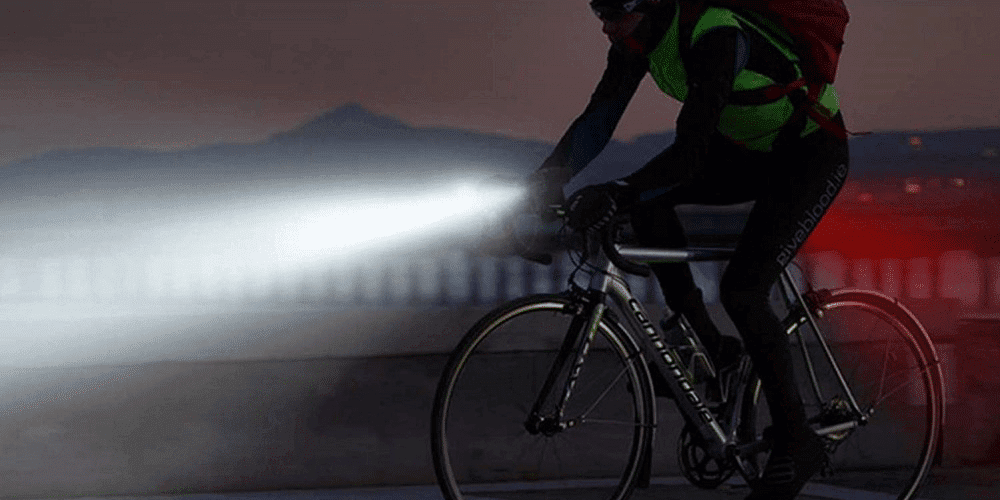If you’re planning on riding your bike at night, then having a bike light is just as important for your safety as wearing a helmet is. Different lights can boast an assortment of features, but what do you actually need? Here are some of the most important things to consider when you’re shopping for a bike light.
Lumen
Very simply, lumen is a measure of how much light you get from a bulb. The higher the lumens, the brighter the light. But when you’re choosing a bike light, brighter isn’t necessarily better. Keep in mind that the high beams of a car max out at 1200 lumens. Compare that to some of the 2000-3000 lumens that some LED flashlights are capable of putting out, and you understand just how dangerous having an incredibly bright bike light can be on a busy road.
Blinding your fellow road users puts everyone in danger. If you frequently bike down busy roads, choose a bike light that can throw out at least 300 lumens – bright enough that you can see and be seen, but not so bright that you put anyone in danger. And if you’re especially concerned with making sure you’re not affecting the eyesight of other road users, headlamps are a hands-free way to direct your light away from passing cars.
If you find your cycling routes vary between busy and remote locations, then you should choose a bike light that can switch between brightness levels. 300 lumens might be perfect for riding down a fairly busy road, but if you plan on riding off-road you’ll need a brighter light to give you time to react to things in front of you. A tactical flashlight will allow you to cycle through several brightness settings so that you can find the right amount of illumination for your situation. Add a flashlight mount to your handlebars so that both hands are free for steering and braking, and you’re ready to ride!
Beam Width
It’s not enough for a bike light to just be bright. It also needs to flood the area in front of the rider. A focused beam while riding a bike is dangerous – it’s like putting blinders on a horse. If you can’t see anything that’s right in front of you, it’s almost impossible to react to things happening in your peripheral vision. Some headlamps are equipped with different beam settings, allowing you to switch between flood and focused beams with the click of a button.
Make sure that the light you’re considering has the ability to illuminate the area in front of and around you for at least a few hundred meters. A tactical flashlight, attached to amount, is great for this – in addition to cycling through brightness settings, these lights also increase their throw. It can be a delicate balance between beamwidth and lumen output, and it will take some time to find the right bike light that covers all of these bases.
Ease of Charging
Can’t decide between two similar bike lights? Then keep in mind how easy one might be to charge over the other. Will you have to unscrew a plate and keep track of a tiny screw to replace the battery in one? Or can you simply plug the light into a USB port to charge it? ease of use extends beyond intuitive brightness settings. The last thing you want is to buy a bike light that ultimately keeps you from cycling because it’s difficult to charge.
Rechargeable lights can be connected to a USB port and will last for hours. A tactical flashlight equipped with a battery power display will show you when your charge is running low, meaning you won’t find yourself stranded in the dark. Keep these three things in mind when you start your shopping and you’re sure to find a light that keeps you safe!
